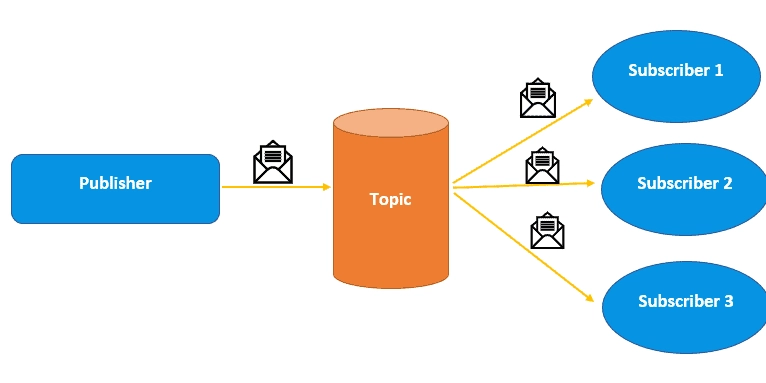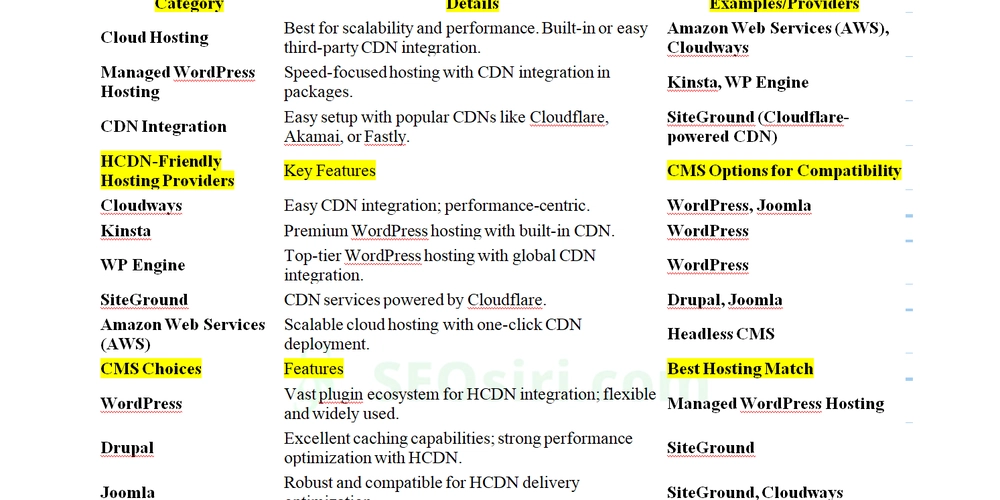Building a Simple High-Performance PubSub System with Functional Go (PushInterval)
Building a High-Performance PubSub System with Functional Go As a software engineer passionate about building robust distributed systems, I'd like to share my experience creating t-pubsub, a high-performance publish-subscribe system built with Go using functional programming principles. This project combines modern Go practices with functional programming to create a reliable, metrics-enabled message delivery system. Why Another PubSub System? Most PubSub implementations use object-oriented patterns with mutable state, leading to potential race conditions and hard-to-track bugs in concurrent scenarios. t-pubsub takes a different approach by embracing functional programming principles: Immutability: Operations return new instances instead of modifying existing state Pure Functions: Minimize side effects for predictable behavior Higher-Order Functions: Functions that operate on other functions for flexibility Core Architecture The system is built around several key components: // ConsumerFunc defines the signature for consumer functions type ConsumerFunc func(msg model.Message) // MessageStore is a functional interface for message operations type MessageStore interface { AddMessage(msg model.Message) MessageStore GetMessages() []model.Message GetMessageByID(id string) (model.Message, bool) ReplaceMessage(id string, msg model.Message) MessageStore ClearMessages() MessageStore } The core PubSub type encapsulates the message store and consumer functions while maintaining thread safety: type PubSub struct { store MessageStore consumers []ConsumerFunc mutex sync.RWMutex pushInterval time.Duration stopChan chan struct{} metrics *MetricsRegistry } Functional Design Patterns 1. Immutable State Management Instead of modifying state directly, operations return new instances: // Subscribe adds a new consumer (functional approach) func Subscribe(ps *PubSub, consumer ConsumerFunc) *PubSub { // Create a copy of consumers slice (immutability) newConsumers := make([]ConsumerFunc, len(ps.consumers), len(ps.consumers)+1) copy(newConsumers, ps.consumers) // Add the new consumer newConsumers = append(newConsumers, consumer) // Create a new PubSub with updated consumers newPS := &PubSub{ store: ps.store, consumers: newConsumers, mutex: sync.RWMutex{}, pushInterval: ps.pushInterval, stopChan: ps.stopChan, metrics: ps.metrics, } return newPS } 2. Functional Options Pattern Configuration is handled through functional options, making it flexible and extensible: // Create PubSub with custom options ps := pubsub.NewPubSub( pubsub.WithPushInterval(100 * time.Millisecond), pubsub.WithMessageStore(customStore), pubsub.WithMetrics(customMetrics), ) Real-Time Performance Monitoring One of the standout features is comprehensive metrics collection integrated with Prometheus and Grafana. The system tracks: Message rates (published/delivered) Queue size and utilization Consumer latency percentiles Processing time distributions Error rates // Metrics are updated automatically during operations ps.metrics.MessagesPublished.Inc() ps.metrics.QueueSize.Inc() ps.metrics.MessagesInQueue.Inc() ps.metrics.QueueUtilization.Set(float64(len(queueSize)) / float64(1000) * 100) Batch Processing Capabilities For high-throughput scenarios, the system supports batch processing: batchConfig := pubsub.NewBatchConsumerConfig(). WithBatchSize(10). WithTimeout(5 * time.Second) batchProcessor := func(batch []model.Message) { fmt.Printf("Processing batch of %d messages\n", len(batch)) } ps = pubsub.SubscribeBatchConsumer(ps, batchConfig, batchProcessor) Performance Tuning The system includes built-in benchmarking tools for performance optimization: curl -X POST http://localhost:2112/benchmark \ -H "Content-Type: application/json" \ -d '{ "messageCount": 1000, "concurrentProducers": 4, "messageSize": 512 }' You can also run continuous simulations to test different scenarios: curl -X POST http://localhost:2112/simulate/start \ -H "Content-Type: application/json" \ -d '{ "messageRate": 50, "numberProducers": 2, "numberConsumers": 3, "duration": "10m" }' Containerized Deployment The system is Docker-ready with a complete monitoring stack: PubSub Service: The main application Prometheus: Metrics collection Grafana: Real-time visualization The included Grafana dashboards provide instant visibility into: Message throughput Queue metrics Consumer performance System health indicators Conclusion Building t-pubsub with functional programming principles in Go has resulted in a system that is: Thread-safe by design Easy to rea

Building a High-Performance PubSub System with Functional Go
As a software engineer passionate about building robust distributed systems, I'd like to share my experience creating t-pubsub, a high-performance publish-subscribe system built with Go using functional programming principles. This project combines modern Go practices with functional programming to create a reliable, metrics-enabled message delivery system.
Why Another PubSub System?
Most PubSub implementations use object-oriented patterns with mutable state, leading to potential race conditions and hard-to-track bugs in concurrent scenarios. t-pubsub takes a different approach by embracing functional programming principles:
- Immutability: Operations return new instances instead of modifying existing state
- Pure Functions: Minimize side effects for predictable behavior
- Higher-Order Functions: Functions that operate on other functions for flexibility
Core Architecture
The system is built around several key components:
// ConsumerFunc defines the signature for consumer functions
type ConsumerFunc func(msg model.Message)
// MessageStore is a functional interface for message operations
type MessageStore interface {
AddMessage(msg model.Message) MessageStore
GetMessages() []model.Message
GetMessageByID(id string) (model.Message, bool)
ReplaceMessage(id string, msg model.Message) MessageStore
ClearMessages() MessageStore
}
The core PubSub type encapsulates the message store and consumer functions while maintaining thread safety:
type PubSub struct {
store MessageStore
consumers []ConsumerFunc
mutex sync.RWMutex
pushInterval time.Duration
stopChan chan struct{}
metrics *MetricsRegistry
}
Functional Design Patterns
1. Immutable State Management
Instead of modifying state directly, operations return new instances:
// Subscribe adds a new consumer (functional approach)
func Subscribe(ps *PubSub, consumer ConsumerFunc) *PubSub {
// Create a copy of consumers slice (immutability)
newConsumers := make([]ConsumerFunc, len(ps.consumers), len(ps.consumers)+1)
copy(newConsumers, ps.consumers)
// Add the new consumer
newConsumers = append(newConsumers, consumer)
// Create a new PubSub with updated consumers
newPS := &PubSub{
store: ps.store,
consumers: newConsumers,
mutex: sync.RWMutex{},
pushInterval: ps.pushInterval,
stopChan: ps.stopChan,
metrics: ps.metrics,
}
return newPS
}
2. Functional Options Pattern
Configuration is handled through functional options, making it flexible and extensible:
// Create PubSub with custom options
ps := pubsub.NewPubSub(
pubsub.WithPushInterval(100 * time.Millisecond),
pubsub.WithMessageStore(customStore),
pubsub.WithMetrics(customMetrics),
)
Real-Time Performance Monitoring
One of the standout features is comprehensive metrics collection integrated with Prometheus and Grafana. The system tracks:
- Message rates (published/delivered)
- Queue size and utilization
- Consumer latency percentiles
- Processing time distributions
- Error rates
// Metrics are updated automatically during operations
ps.metrics.MessagesPublished.Inc()
ps.metrics.QueueSize.Inc()
ps.metrics.MessagesInQueue.Inc()
ps.metrics.QueueUtilization.Set(float64(len(queueSize)) / float64(1000) * 100)
Batch Processing Capabilities
For high-throughput scenarios, the system supports batch processing:
batchConfig := pubsub.NewBatchConsumerConfig().
WithBatchSize(10).
WithTimeout(5 * time.Second)
batchProcessor := func(batch []model.Message) {
fmt.Printf("Processing batch of %d messages\n", len(batch))
}
ps = pubsub.SubscribeBatchConsumer(ps, batchConfig, batchProcessor)
Performance Tuning
The system includes built-in benchmarking tools for performance optimization:
curl -X POST http://localhost:2112/benchmark \
-H "Content-Type: application/json" \
-d '{
"messageCount": 1000,
"concurrentProducers": 4,
"messageSize": 512
}'
You can also run continuous simulations to test different scenarios:
curl -X POST http://localhost:2112/simulate/start \
-H "Content-Type: application/json" \
-d '{
"messageRate": 50,
"numberProducers": 2,
"numberConsumers": 3,
"duration": "10m"
}'
Containerized Deployment
The system is Docker-ready with a complete monitoring stack:
- PubSub Service: The main application
- Prometheus: Metrics collection
- Grafana: Real-time visualization
The included Grafana dashboards provide instant visibility into:
- Message throughput
- Queue metrics
- Consumer performance
- System health indicators
Conclusion
Building t-pubsub with functional programming principles in Go has resulted in a system that is:
- Thread-safe by design
- Easy to reason about
- Highly testable
- Performance-optimized
- Ready for production use
The combination of functional patterns with Go's strong concurrency support creates a robust foundation for building distributed messaging systems. The integrated metrics and monitoring capabilities make it suitable for production environments where observability is crucial.
You can find the complete source code on GitHub.











































































































































































![[The AI Show Episode 142]: ChatGPT’s New Image Generator, Studio Ghibli Craze and Backlash, Gemini 2.5, OpenAI Academy, 4o Updates, Vibe Marketing & xAI Acquires X](https://www.marketingaiinstitute.com/hubfs/ep%20142%20cover.png)




























































































































![[DEALS] The Premium Learn to Code Certification Bundle (97% off) & Other Deals Up To 98% Off – Offers End Soon!](https://www.javacodegeeks.com/wp-content/uploads/2012/12/jcg-logo.jpg)


![From drop-out to software architect with Jason Lengstorf [Podcast #167]](https://cdn.hashnode.com/res/hashnode/image/upload/v1743796461357/f3d19cd7-e6f5-4d7c-8bfc-eb974bc8da68.png?#)








































































































.png?#)























.webp?#)










_Christophe_Coat_Alamy.jpg?#)
 (1).webp?#)




































































































![Apple Considers Delaying Smart Home Hub Until 2026 [Gurman]](https://www.iclarified.com/images/news/96946/96946/96946-640.jpg)
![iPhone 17 Pro Won't Feature Two-Toned Back [Gurman]](https://www.iclarified.com/images/news/96944/96944/96944-640.jpg)
![Tariffs Threaten Apple's $999 iPhone Price Point in the U.S. [Gurman]](https://www.iclarified.com/images/news/96943/96943/96943-640.jpg)



































































































































